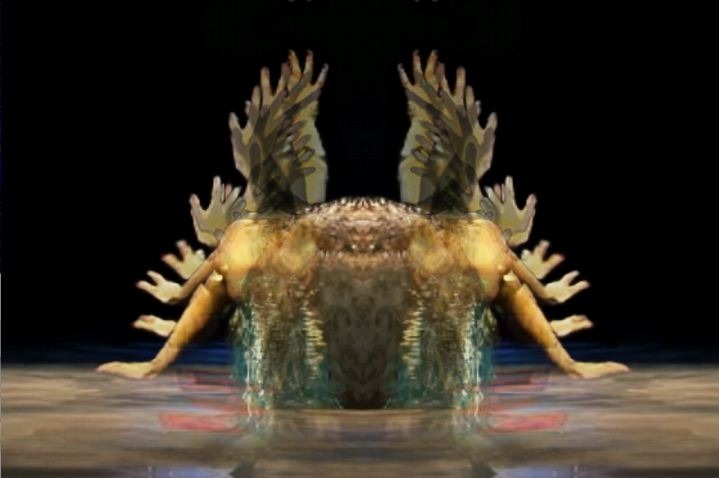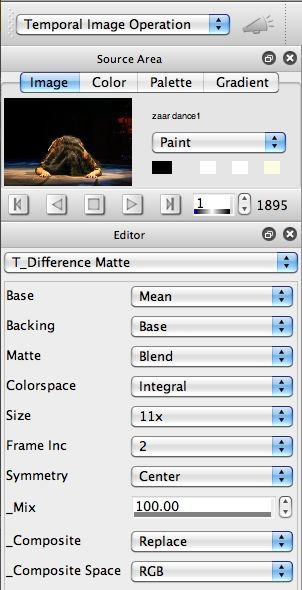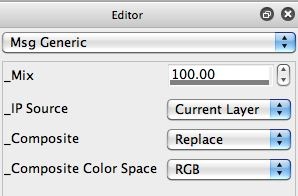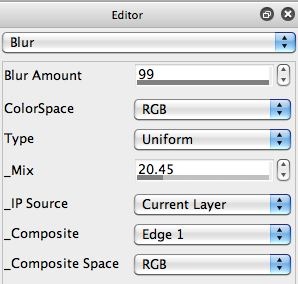Today’s post continues the discussion I started yesterday about a moving symmetry effect based on temporal processing of a dancers motion. Yesterday’s post detailed the specifics of how I built a simple MSG preset to create the symmetry effect. Today’s post will take a look at the rest of the processing used to create the overall effect. The 2 images above are frame captures from some processed video.
The paint action sequence (PASeq) shown below was used to create the video processing effects shown above.











